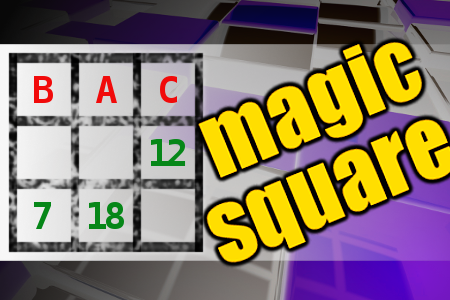MAGIC SQUARE: Calculate A+B-C
The aim is to place the some numbers from the list (7, 9, 12, 13, 14, 18, 22, 24, 28, 42) into the empty squares and squares marked with A, B an C. Sum of each row and column should be equal. All the numbers of the magic square must be different. Find values for A, B, and C. Solution is A+B-C.Correct answers: 13
The first user who solved this task is Nasrin 24 T.
#brainteasers #math #magicsquare

Learn how to lead your heart
Learn how to lead your heart; start recognizing when something isn’t good for you and be strong enough to let it go. A person can only waste the time you give them an opportunity to waste. Stop trying to open doors for people who constantly shut you out. Make sure the interest is shown in the effort, the talk is supported by the actions, and the trust is earned through the consistency.

